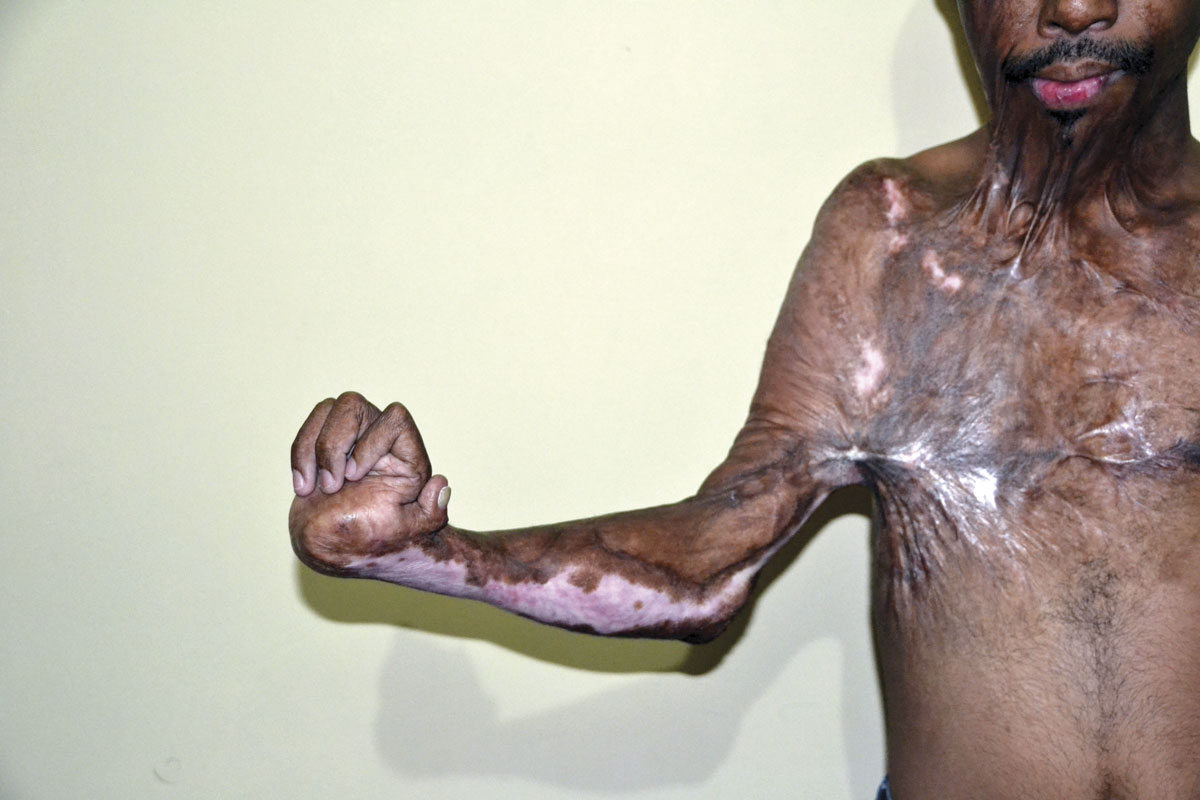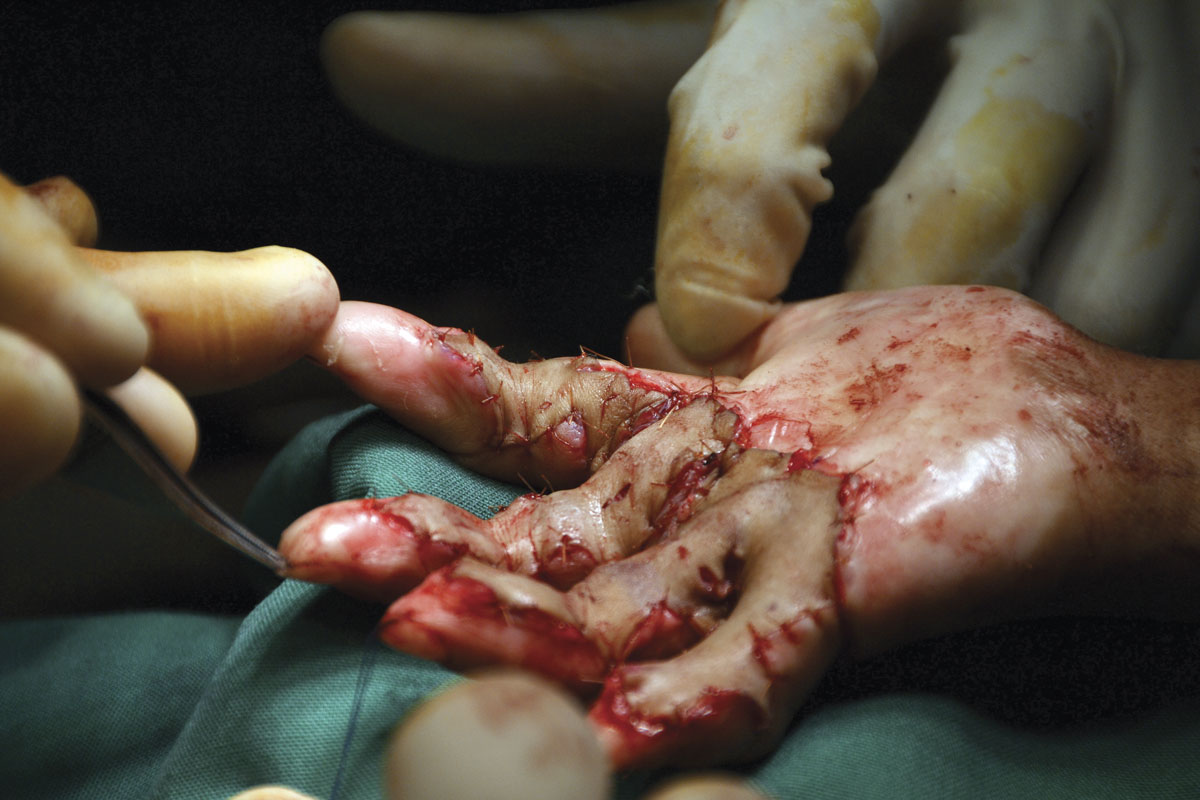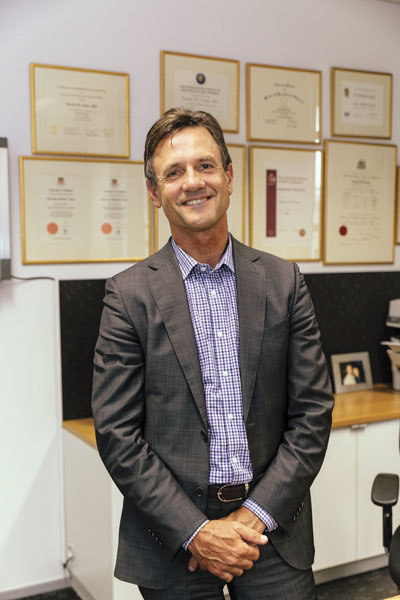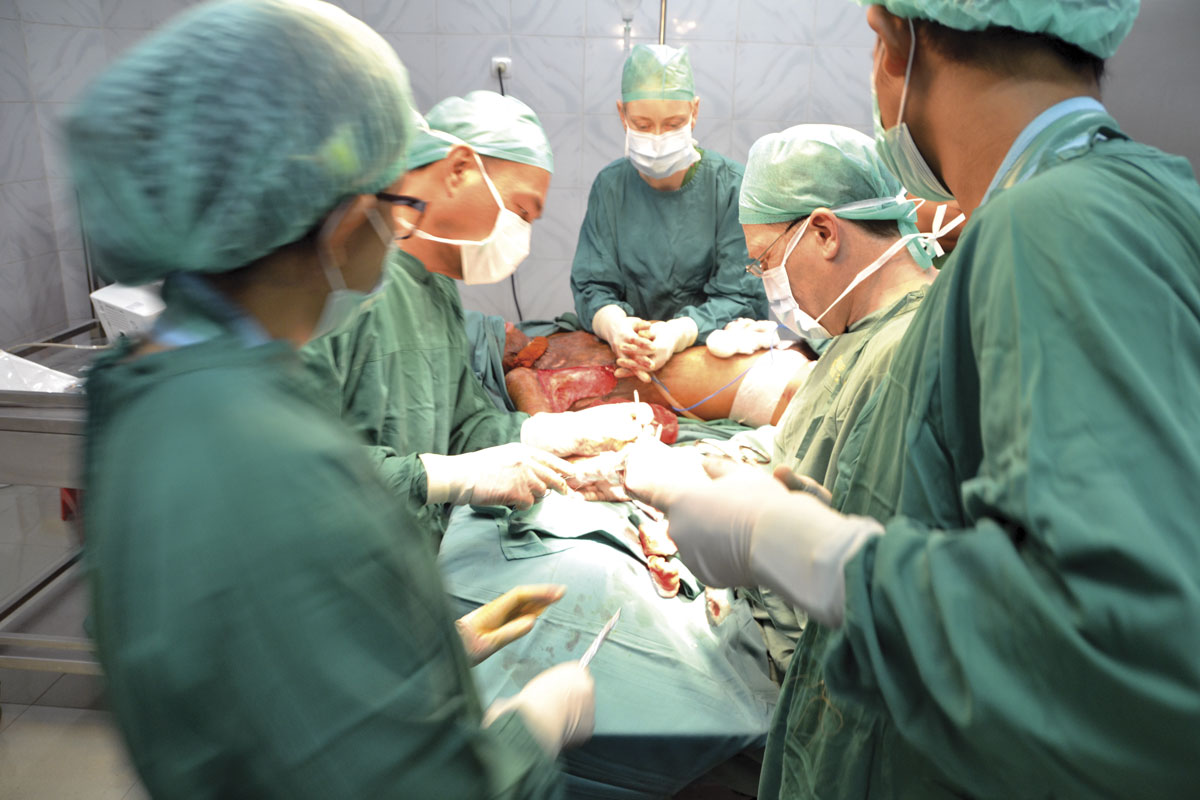
Plastic surgeons Dr Mark Duncan Smith and Dr Tim Cooper have had long associations with the people of Bali. For Tim, it was a life changing meeting with the inspirational John Fawcett and, for Mark, the trauma of the Bali Bombings.
Mark Duncan Smith
How did it transpire that you began visiting Bali?
My first association with Bali, a place I had never been, began in October, 2002 was being on-call statewide for burns when I got the first call about the Bali Bombings. I was in Cottesloe, waiting for a takeaway coffee. The next month was spent with the burns team at RPH, dealing with the fallout.
When that crisis settled, two Indonesian women from Bali came to RPH and I treated both of them.
In 2004, I went to Bali for the first time to deliver lectures at Sanglah Hospital and build a relationship between the two hospital burns units, just in case a similar disaster happened again. Part of this trip was also to do an Interplast needs assessment of locally treated burns victims who could not afford burns or reconstructive surgery.
(Interplast Australia & New Zealand sends teams of volunteer surgeons, anaesthetists, nurses and allied therapists to countries in the Asia Pacific Region to provide free surgical treatment and medical training.)
I identified three patients who needed significant and complex surgery that could not be undertaken in Bali at the time. Two patients were treated at RPH (at little hospital cost), and later one at Bethesda Hospital (at no cost).
Several years ago, Tim (Cooper) and I, in association with the John Fawcett Foundation (JFF), treated several patients with extremely bad neck contractures here in Perth. These patients were treated at the Mount Hospital as charity cases. When I saw the pictures of them, I said to Tim I thought they were so complex, they should not be operated on in Bali.
JFF identified numerous patients in Bali with severe burns contractures and so Tim and I have now completed two trips there, almost exclusively for severe burns reconstructive surgery.
With the upskilling of the medical and nursing staff in techniques and systems, it is extremely unlikely we would ever consider bringing another patient here to Perth. Such a trip is an expensive exercise and a far more cost-effective method is to treat them locally.
 How often do you go and how long do you stay?
How often do you go and how long do you stay?
Tim and I now go each year for a five-day trip. The first day is a clinic to examine and formulate a surgical priority list and theatre plan for the three full days operating in two theatres. We do a ward round on the final day to ensure there are no problems.
What is your clinical focus when you get there?
Identifying the most severe cases, taking into account the anatomy of the deformity, its impact on the patient physically, emotionally, psychologically, developmentally and socially.
Surgically the clinical focus is to teach local doctors the surgical techniques to deal with these problems.
What sorts of presentations do you see most commonly?
Severe burns contractures are the most common. We often see chins fused to chests, arms as parts of chests and multiple contractures on a limb rendering it near useless.
One case this trip was a four-year-old girl with all four fingers on both hands fused to her palms. That took me 4-5 hours to release them all and place full thickness ‘greets’ to all the raw areas. She should have useful hands again with hopefully all the developmental and social sequelae.
A single joint contracture is considered an easy case.
 What do Balinese health professionals need most to care for the health of their community?
What do Balinese health professionals need most to care for the health of their community?
The same thing Western Australians need. Infrastructure, financial resources and capacity to deliver care. In addition, the surgeon we are working with needs training and surgical upskilling to enable him to deal with more of these problems independently.
In Australia, we are extremely fortunate in burns care in that we deal with acute burns with early surgery and skin grafting. This eradicates the incidence of severe burns contractures, and massively reduces the need for secondary reconstructive procedures.
That is not the case in all countries, often for fear of bleeding a patient out with acute debridement. This is also and exactly the case I found on an Interplast trip to Mongolia a few years ago.
The most comfortable position for a patient with chronic wounds is the fetal position. Accordingly, the patient’s neck and limbs heal in a flexed position and eventually become fused with the resultant burns’ contracture. A situation that unfortunately can’t be avoided without appropriate acute surgery.
Why is this work important to you?
These patients, who are isolated socially and economically by their conditions, would not otherwise get reconstructive burns surgery. To have my degree of expertise and training and not use it to help such patients would be a personal tragedy for me.
It also gives me great personal satisfaction to take a boy who crawls on the ground like a crab because both his legs are limited at the knees at 100 to 110 degrees of flexion, do his releases and get his legs near straight with the expectation that he will be able to walk again. I gave this boy a soccer ball on the final day ward round in the hope that it would give him motivation and help with his rehabilitation. The boy and his father looked at me blankly. Not sure he was into soccer!
What would you say to another doctor who was thinking of committing to overseas service?
It is not easy to break our busy schedules but it is well worth the effort. I get more out of these trips than I put into them and it also gives me balance to my work here in Perth. A kind of Yin and Yang. Mid-year, I do a seven to 10-day trip to Vanuatu annually, and the Bali trip is in the latter part of the year.

Tim Cooper
How did it transpire?
I was first contacted, out of the blue, by John Fawcett in 1997, when I first returned to practise in Perth. He suggested that as I liked to go surfing in Indonesia, I might consider giving back to the people. I started working for the foundation soon after and have continued to do so ever since.
How often and how long?
I visit once or twice a year, usually with a fellow plastic surgeon and sometimes a plastics trainee. A typical visit involves a clinic, where we see follow-ups and new patients and then plan a three-day operating schedule with the final, fifth day set aside for post-op planning. The operation planning is performed in conjunction with the local surgeon. Three-day operating schedules seem about the optimum time due to limited resources. We try not outstay our welcome at the hospital in Denpasar. We have been doing it for a long time, so the organisation is pretty slick. It is rare we have to turn away patients. This is important as patients travel sometimes days to see us with relatives in tow.
What is the clinical focus?
We started a cleft lip and palate service originally, as we felt there was an unmet need for this. At that time there were no plastic surgeons in Bali. Over 2000 cases have been operated on by the John Fawcett Foundation (JFF). We have trained four surgeons over the past 23 years and two have visited Perth for upskilling. This was John’s wish that we not only provide a service but teach the local medical staff how to deal with these complex problems.
The service has expanded geographically to include the whole of Nusa Tengara and south Java. Bali, alone, has over 4 million people, so the patient load is never-ending. We identify patients through the foundation’s mobile eye clinics. More recently we have begun collaborating with the Kolewa Foundation, a Dutch charity which is active in Indonesia.
We have become increasingly involved with managing delayed burns cases. In rural Indonesia, these are managed with dressings and allowed to heal by secondary intention, resulting in disfiguring burns contractures. Originally, we funded complex burns cases to come to Perth. However, this model has been ceased because of the high cost, social disruption and numbers of patients. Mark and I have now performed two burns visits and we have had acceptable morbidity to enable us to feel comfortable in performing these surgeries.
As well as the cleft lip and palate cases and delayed burns cases, we have also seen complex craniofacial deformities, congenital hand deformities and the odd tumour presentation.
What do Bali Health professionals need?
Educational resources are paramount. We also enable equipment and dressings donations to reduce the financial burden.
Why is the work important to you?
Giving back is the focus of many health professionals. We come from a very privileged position in a country that is blessed with unbelievable health resources. You don’t have to dig deep below the surface in Indonesia to see the extreme poverty. The foundation was started by John over 30 years ago. He has left a legacy that I would like to continue. The reward is in the giving.
What would I say to other doctors considering this work?
I would encourage any young doctor to aspire to perform voluntary work in any capacity. As plastic surgeons we have unique skills that are readily transferable. My colleagues contribute to many charitable endeavours including Interplast and Operation Smile. The JFF has been for many years supported by ophthalmologists from Adelaide and Perth. They have revolutionised the management of cataracts in remote and rural settings in Indonesia.


